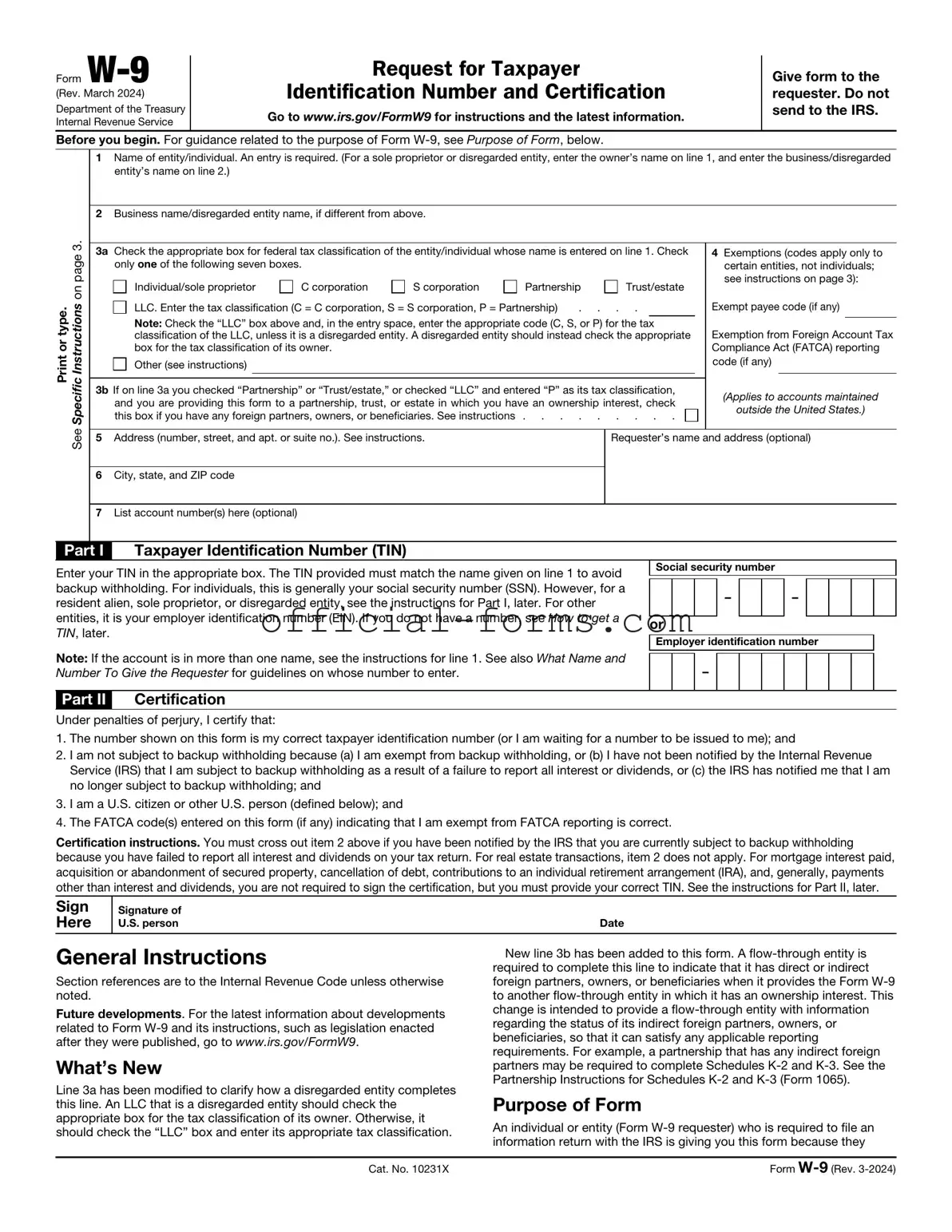Filling out the IRS W-9 form can seem straightforward, but many people make common mistakes that can lead to delays or complications. One of the most frequent errors is providing an incorrect taxpayer identification number (TIN). This number is crucial for the IRS to correctly associate your income with your tax record. Double-check your Social Security number or Employer Identification Number to ensure accuracy.
Another mistake often encountered is failing to sign and date the form. A W-9 without a signature is essentially incomplete. The IRS requires your signature as a declaration that the information provided is accurate. Without it, the form cannot be processed, which can lead to issues down the line.
Some individuals mistakenly select the wrong tax classification. The W-9 form asks whether you are an individual, corporation, partnership, or another type of entity. Choosing the incorrect classification can lead to misreporting of income and potential tax penalties. Take the time to understand your business structure and select accordingly.
Many people also overlook the importance of updating their W-9 when their information changes. If you move, change your name, or alter your business structure, it’s essential to submit a new W-9. Failing to do so can result in outdated information being used for tax reporting, which can complicate your tax situation.
Another common error is neglecting to provide the correct address. The IRS uses this address for important correspondence, including tax documents. Make sure the address you provide is current and accurate to avoid missing any critical communications.
Some filers forget to check the box for backup withholding. If you are subject to backup withholding, you must indicate this on the form. Not doing so may lead to the IRS withholding a portion of your payments, which can affect your cash flow.
Lastly, individuals sometimes fail to read the instructions carefully. The W-9 form includes specific guidance that can help you avoid pitfalls. Taking a few moments to read through the instructions can save you time and frustration in the long run.
